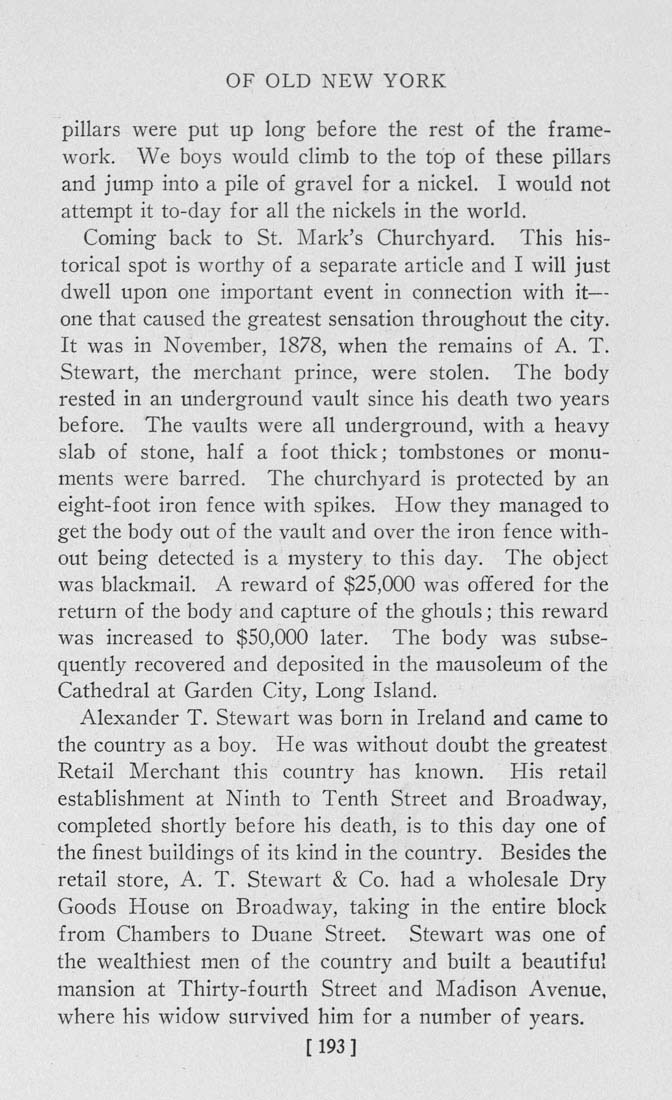OF OLD NEW YORK
pillars were put up long before the rest of the frame¬
work. We boys would climb to the top of these pillars
and jump into a pile of gravel for a nickel. I would not
attempt it to-day for all the nickels in the world.
Coming back to St. Mark's Churchyard. This his¬
torical spot is worthy of a separate article and I will just
dwell upon one important event in connection with it—
one that caused the greatest sensation throughout the city.
It was in November, 1878, when the remains of A. T.
Stewart, the merchant prince, were stolen. The body
rested in an underground vault since his death two years
before. The vaults were all underground, with a heavy
slab of stone, half a foot thick; tombstones or monu¬
ments were barred. The churchyard is protected by an
eight-foot iron fence with spikes. How they managed to
get the body out of the vault and over the iron fence with¬
out being detected is a mystery to this day. The object
was blackmail. A reward of $25,000 was offered for the
return of the body and capture of the ghouls; this reward
was increased to $50,000 later. The body was subse¬
quently recovered and deposited in the mausoleum of the
Cathedral at Garden City, Long Island.
Alexander T. Stewart was born in Ireland and came to
the country as a boy. He was without doubt the greatest
Retail Merchant this country has known. His retail
establishment at Ninth to Tenth Street and Broadway,
completed shortly before his death, is to this day one of
the finest buildings of its kind in the country. Besides the
retail store, A. T. Stewart & Co. had a wholesale Dry
Goods House on Broadway, taking in the entire block
from Chambers to Duane Street. Stewart was one of
the wealthiest men of the country and built a beautiful
mansion at Thirty-fourth Street and Madison Avenue,
where his widow survived him for a number of years.
[193]
|








